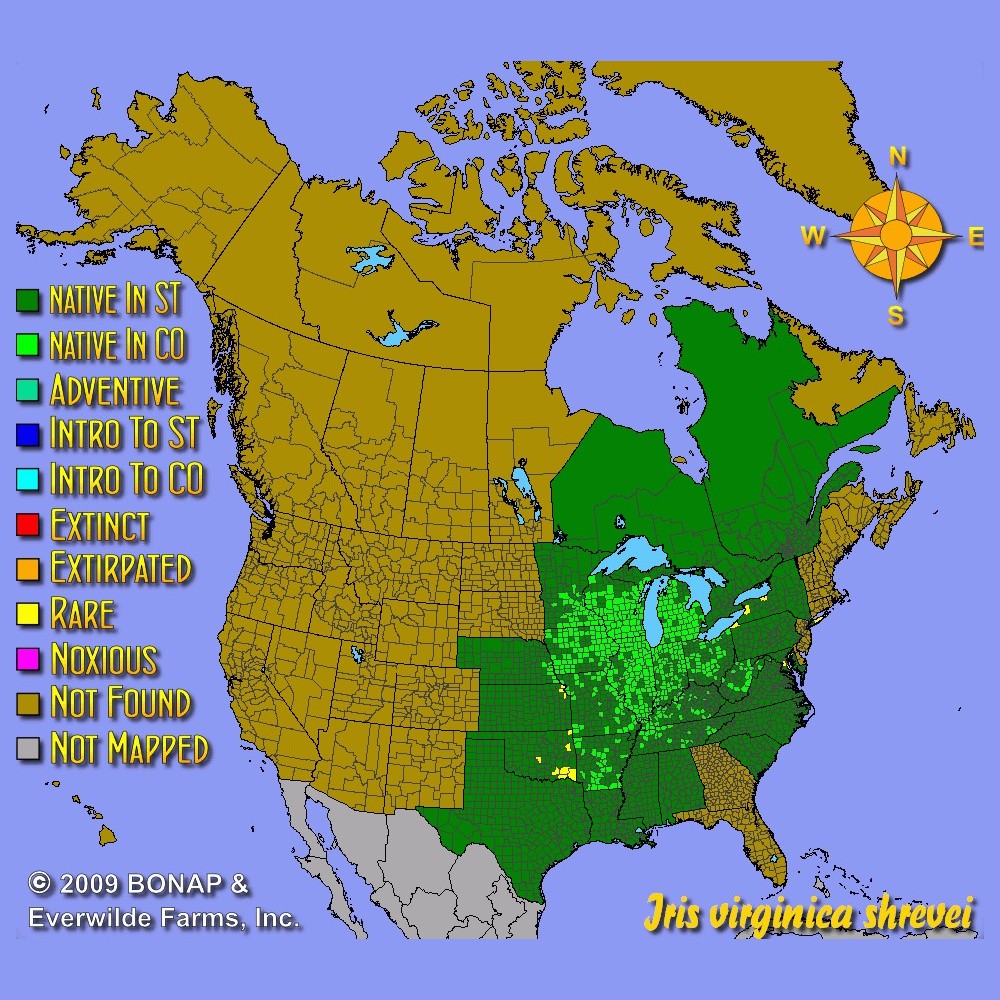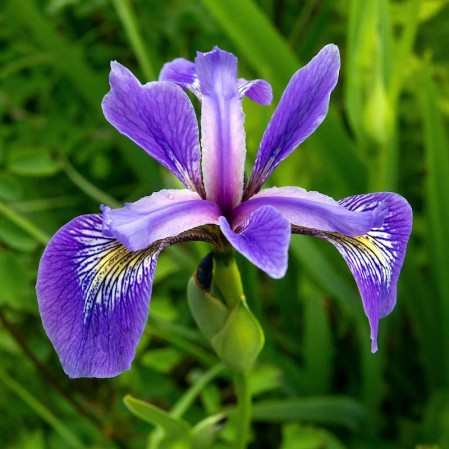Southern Blue Flag Iris Seeds
- HOW TO GROW
- FAST FACTS
- REVIEWS
HOW TO GROW
Sowing: To help soften the hard seed coat, soak the seeds overnight in warm water before planting. To germinate, these Southern blue flag iris seeds need a period of several months of cold followed by warmth. To accomplish this naturally, direct sow the Iris Virginica Shrevei seeds on the surface of the soil in fall; they will begin to germinate in the late spring and early summer. Alternatively, the seed can be store in moist sand in the refrigerator for 60-90 days then planted on the surface of the soil in peat pots. For best results use slightly acidic soil, keeping it moist and at a temperature of 70-75 degrees F until germination. This seed germinates rather slowly, usually beginning to sprout after approximately three months. Keep in mind that germination will continue through the first several years, as the Southern blue flag iris seeds gradually come out of dormancy. The seedlings can be planted outdoors in late spring or early summer or when there is no chance of frost, or when they have reached a height of 4-6".
Growing: Seedlings will need regular watering until they become established. Mature plants also prefer moist soil, though they tolerate seasonal flooding or occasional dryness. These native plants flourish with little attention, and eventually form natural colonies that last for decades. When fully grown, the plants can easily be divided in late fall. Blooming usually begins in the second year after planting. This plant attracts bees and butterflies.
Harvesting: These blossoms do not perform well as cut flowers, and are best enjoyed outdoors.
Seed Saving: Very soon after blooming, this plant will produce slender green pods that quickly turn brown, split, and drop their seed. Gather the pods as soon as the seeds inside have turned brown; spread the pods out to dry completely, then separate the Iris Virginica Shrevei seeds from the husks. Store the cleaned seed in a cool, dry place; for best results, plant the seed as soon as possible.
FAST FACTS
Common Names: Shreve's Iris, Blue Flag Iris virginica
Latin Name: Iris virginica shrevei
Species Origin: US Native Wildflower
Type: Native Wildflowers
Life Cycle: Perennial
USDA Zones: 3, 4, 5, 6, 7
US Regions: Midwest, Northeast, Southeast
Seeds per Ounce: 1,100
Stratification: Cold/Wet for 16 Weeks
Germination Ease: Stratify 16 Weeks
Sunlight: Full Sun, Part Sun
Height: 36 Inches
Color: Blue, Purple
Bloom Season: Blooms Late Spring, Blooms Early Summer
Uses: Cut Flowers, Deer Resistant
Repeat Buyer
I have used Everwilde seeds for several years. I am always pleased with the quality and legitimacy of the seeds they sell. I am pleased with this product and is typical of what Everwilde sells.
Germinating nicely
I will report later when these little fellas are in bloom. Right now, the tiny seedlings seem to be enjoying my very wet dry creek bed banks.
DESCRIPTION

HOW TO GROW
Sowing: To help soften the hard seed coat, soak the seeds overnight in warm water before planting. To germinate, these Southern blue flag iris seeds need a period of several months of cold followed by warmth. To accomplish this naturally, direct sow the Iris Virginica Shrevei seeds on the surface of the soil in fall; they will begin to germinate in the late spring and early summer. Alternatively, the seed can be store in moist sand in the refrigerator for 60-90 days then planted on the surface of the soil in peat pots. For best results use slightly acidic soil, keeping it moist and at a temperature of 70-75 degrees F until germination. This seed germinates rather slowly, usually beginning to sprout after approximately three months. Keep in mind that germination will continue through the first several years, as the Southern blue flag iris seeds gradually come out of dormancy. The seedlings can be planted outdoors in late spring or early summer or when there is no chance of frost, or when they have reached a height of 4-6".
Growing: Seedlings will need regular watering until they become established. Mature plants also prefer moist soil, though they tolerate seasonal flooding or occasional dryness. These native plants flourish with little attention, and eventually form natural colonies that last for decades. When fully grown, the plants can easily be divided in late fall. Blooming usually begins in the second year after planting. This plant attracts bees and butterflies.
Harvesting: These blossoms do not perform well as cut flowers, and are best enjoyed outdoors.
Seed Saving: Very soon after blooming, this plant will produce slender green pods that quickly turn brown, split, and drop their seed. Gather the pods as soon as the seeds inside have turned brown; spread the pods out to dry completely, then separate the Iris Virginica Shrevei seeds from the husks. Store the cleaned seed in a cool, dry place; for best results, plant the seed as soon as possible.
FAST FACTS
Common Names: Shreve's Iris, Blue Flag Iris virginica
Latin Name: Iris virginica shrevei
Species Origin: US Native Wildflower
Type: Native Wildflowers
Life Cycle: Perennial
USDA Zones: 3, 4, 5, 6, 7
US Regions: Midwest, Northeast, Southeast
Seeds per Ounce: 1,100
Stratification: Cold/Wet for 16 Weeks
Germination Ease: Stratify 16 Weeks
Sunlight: Full Sun, Part Sun
Height: 36 Inches
Color: Blue, Purple
Bloom Season: Blooms Late Spring, Blooms Early Summer
Uses: Cut Flowers, Deer Resistant
Reviews
Review
Repeat Buyer
I have used Everwilde seeds for several years. I am always pleased with the quality and legitimacy of the seeds they sell. I am pleased with this product and is typical of what Everwilde sells.
Review
Germinating nicely
I will report later when these little fellas are in bloom. Right now, the tiny seedlings seem to be enjoying my very wet dry creek bed banks.





